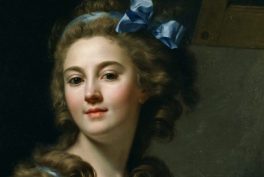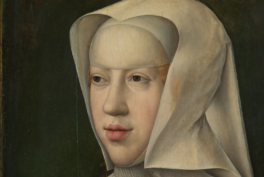Inspired Roots
Catlett’s African American and Mexican heritage profoundly influenced her art and perspective. Her Black roots shaped her views on racial identity, social justice, and the strength of marginalized communities in the U.S. Her connection to Mexico, through marriage to Francisco Mora and studies with artists like Diego Rivera, enriched her art with themes of cultural pride, community solidarity, and the fight for equality.
Catlett’s dual heritage inspired her dedication to portraying dignity and strength in her sculptures and prints, which established her as a key figure at the intersection of art, identity, and social change.
Celebrating Identity and Resilience
Elizabeth Catlett’s immersion in Mexican Muralism, shaped by her apprenticeship with luminaries such as Diego Rivera and her integral role in the Taller de Gráfica Popular (People’s Graphic Workshop), profoundly enriched her artistic journey. Inspired by Mexican murals’ monumental scale and powerful narratives, she embraced a mission to illustrate and amplify marginalized identities.
Three Women of America depicts a strong image of diversity and unity. The artwork portrays three women of different ethnic backgrounds—white, black, and brown—intertwined to symbolize their shared experiences. They share gazes, symbolizing their perspective and solidarity, while their overlapping arms and hands emphasize their connection and mutual support. Catlett employs bold colors and patterns to highlight each woman’s individuality while celebrating their shared humanity.
Honoring Generational Bonds
Seated Mother and Child is a heartfelt bronze sculpture that delicately captures the enduring bond between a mother and child, showcasing Elizabeth Catlett’s meticulous craftsmanship. The choice of material adds a tactile and enduring quality rooted in Mexico’s rich sculptural tradition. Moreover, Catlett’s attention to detail imbues the artwork with depth, warmth, and sensitivity, highlighting the timeless themes of motherhood and ancestral strength.
Uplifting Voices
The Harlem Renaissance in the 1920s and 1930s deeply influenced Catlett’s perspective on Black culture and identity. Artists and writers of this era sought to challenge racial stereotypes and celebrate the richness of Black heritage through diverse artistic forms.
Her renowned series, The Black Woman, consists of 15 linocuts depicting leaders like Sojourner Truth and Harriet Tubman. Each piece in the series narrates stories of struggle and triumph with dignity and grace. These artworks capture Catlett’s compassionate portrayal of Black identity.
Throughout her series, Elizabeth Catlett adeptly employs simple shapes that convey movement with minimal details, imparting immediate and impactful artistry. A standout piece, In Sojourner Truth I Fought for the Rights of Women as well as Negroes, from “The Black Woman” series, is the sixth linoleum cut dedicated to celebrating Black women’s labor and honoring heroines.
Sojourner Truth, born into slavery in 19th-century New York, is depicted as a commanding figure with a penetrating gaze. Elizabeth Catlett’s linocut of Sojourner Truth captures her iconic presence, emphasizing strength and determination in adversity. Her hands point skyward and rest by a Bible, symbolizing faith and dedication to abolitionism. Catlett’s precise linoleum incisions reflect her skilled printmaking techniques.
Malcolm X Speaks for Us showcases Catlett’s art as a potent political statement. In the 1960s and 1970s, she responded to the Civil Rights Movement with artworks honoring leaders like Malcolm X. In this piece, she juxtaposes dignified Black women, including a figure from her “Black Woman” series (1947), alongside Malcolm X, thereby highlighting women’s role in his message of Black liberation. Additionally, the print reflects Catlett’s transition in graphic art style from monochrome to vibrant, boldly colored works later in her career.
Inspiring Future Generations
This touching portrait of a father and son captures hope, resilience, and the promise of the future. Catlett’s skilled craftsmanship and emotional portrayal embody the spirit and potential of the next generation amid social and cultural change.
Elizabeth Catlett’s legacy goes beyond her art, making a lasting impact on global culture. She challenged norms, fought for change, and inspired artists to use creativity for justice and equity. Her work prompts viewers to address injustice and embrace cultural identity with empathy and compassion.
Artworks from Elizabeth Catlett’s Prolific Oeuvre




















